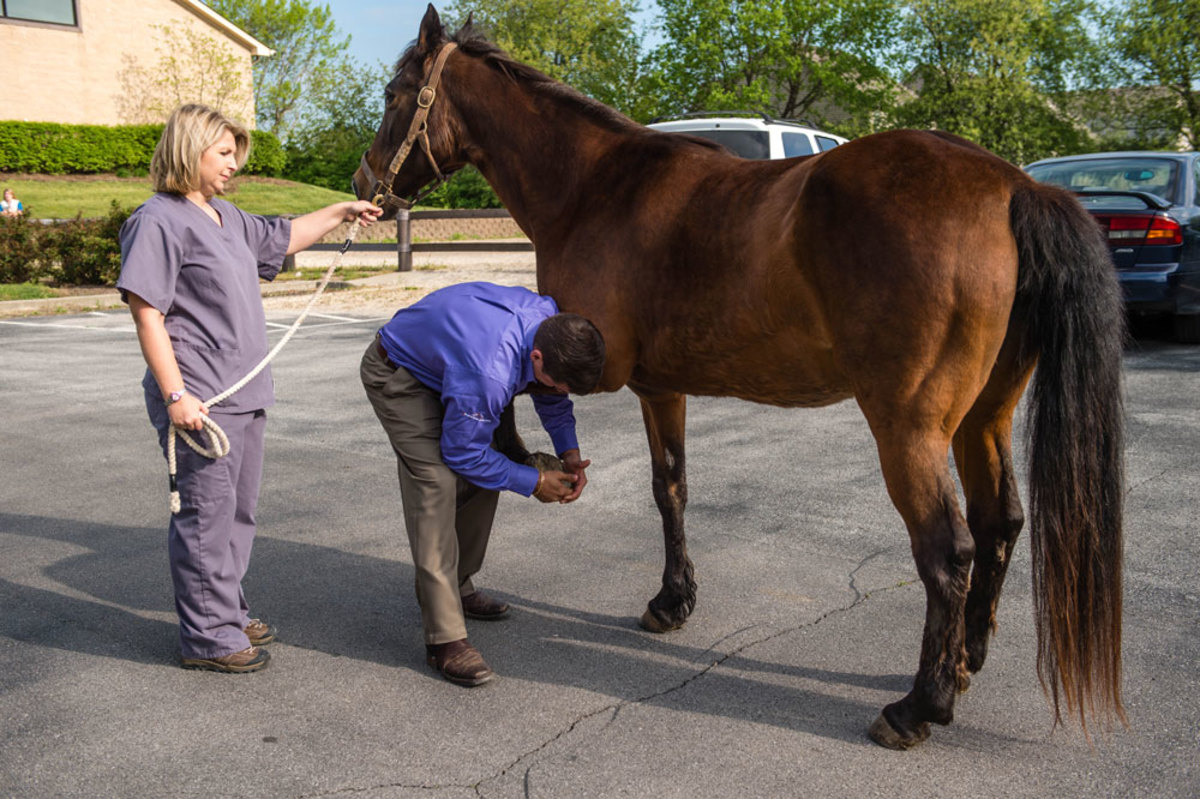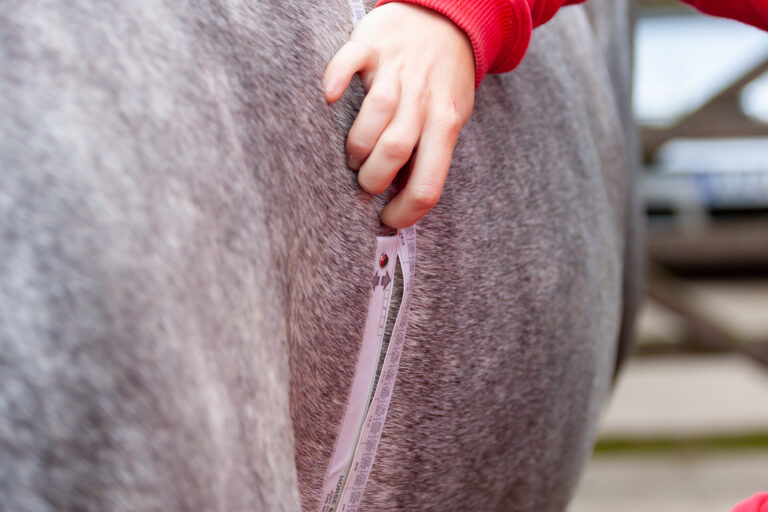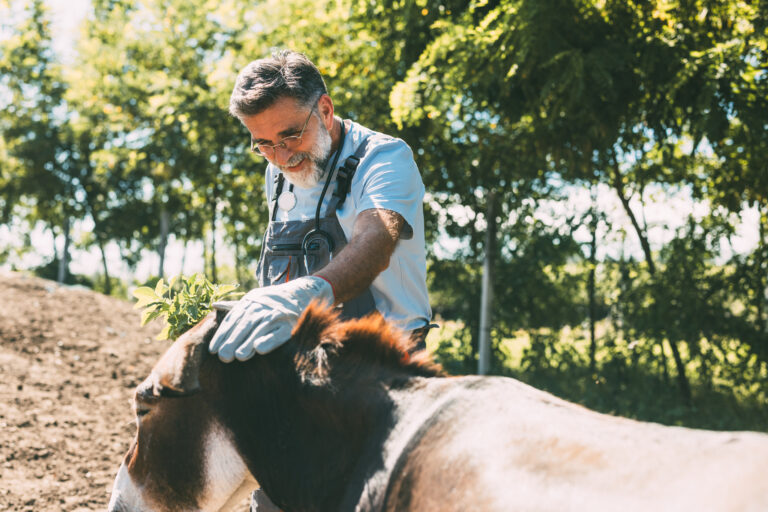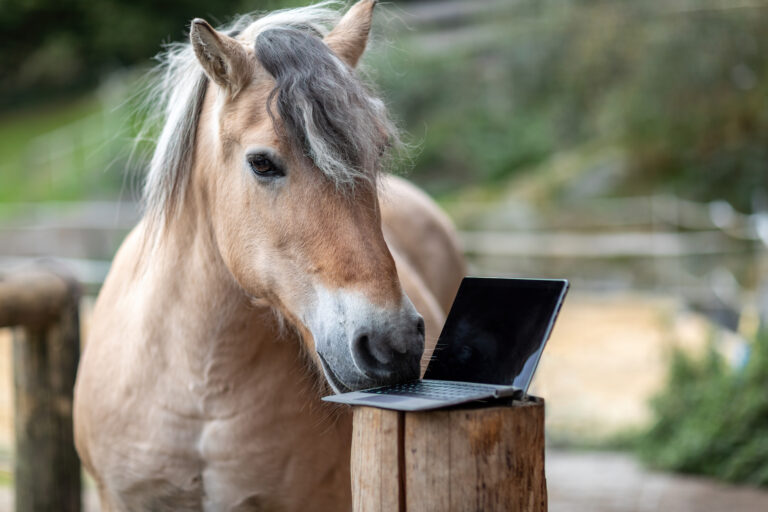
Horse owners—from professionals to amateurs to recreational trail riders—are more educated about horse health than ever before. This increased knowledge has elevated the importance of equine prepurchase exams during the buying process.
For equine practices that offer the service, it can be a significant revenue generator. While prepurchase exams can be lucrative, some practices shy away from offering them because of liability concerns. D. Reese Hand, DVM, DACVS, who practices in Weatherford, Texas, said prepurchase exams are a slippery slope, with some veterinarians accepting the challenge and others passing it by due to liability concerns.
“I take on the challenge,” he said. “To me, it’s one of the more interesting things I get to do.”
Joe Carter, DVM, who practices in Washington, Oklahoma, also embraces the service, performing hundreds of prepurchase exams a year on behalf of reining, cutting, and cow horse buyers. He has established a strict process he follows for every exam. He isn’t swayed by a person’s concern about cost.
“Once you establish a process that you feel is best, the shackles are lifted off,” he said. “It gives you the confidence to know you’re getting the most accurate predictor of prognosis, and you don’t have to worry that you missed something. It leads to less stress. There’s a lot of stress in a vet’s life, so any time we can eliminate it, that’s good.”
“Consistency is the key,” said attorney Ky Mortensen, MBA, the chief operating officer at Alamo Pintado Equine Medical Center in Los Olivos, California. “How you choose to perform a prepurchase exam, and the services you provide as part of your process, is totally up to you. The key is that you have a process that is consistent and that you don’t deviate from it. The minute you start making exceptions and doing things outside the scope of your usual process, you open yourself up to potential liability.”
Think adding or expanding prepurchase exam services is right for your business? Read on.
Collect Appropriate Information
Before jumping in to offer prepurchase exams or pushing an expansion of the service, take time to create a strategy for working with clients. Documentation should be an integral part of the process—one that begins before you ever see the horse.
Mortensen recommended developing an information request form to help you understand who the buyer is. Ask the client what is known about the horse; his or her goals for the horse (including level of competition); and expectations for ongoing maintenance.
“You’ll also want to know who the seller is,” Mortensen said. “Hopefully, they’ll give you prior medical history and information as to whether horse has had any prior injuries and what level of competition the horse has been in.”
It is important to obtain as much information as you can before the exam begins so that you understand as much as you can about the horse, the client (the buyer), and the horse’s history. If you discover that you have a working relationship with both buyer and seller, it is crucial to be completely transparent.
“Let both of them know they are/have been clients,” he said. “Once a conflict is identified, you can choose not to proceed with the exam or you can offer to continue as long as both parties understand you are going to be as transparent as possible.”
Establish a Protocol for Conducting Equine Prepurchase Exams
Once you’ve established a process for getting to know the buyer and seller, decide what an exam will include. A physical to evaluate the horse’s general health is fundamental for every exam. At Hand’s Texas practice, Equine Sports Medicine and Surgery, he personally examines every horse rather than having one of the veterinarians working in the practice perform the exam.
“I’ve come up with a routine so that I do every step the same way every time; that way I don’t miss something,” he said. “I start at the horse’s left nostril, move up his head to his ears, along his body around the back and up the other side finishing at the right nostril.”
A thorough physical exam should include inspecting the eyes and lungs, as well as looking for signs of previous colic surgery or old injuries. A standard lameness exam that includes a flexion test and using hoof testers should be a routine component of any prepurchase exam.
As often as possible, Hand performs his lameness exams on three surfaces— dirt footing, grass, and gravel or pavement.
“It’s important to watch the horses on different surfaces, as this will give you insights to subtle issues not seen on one surface,” he said.
Not every practice requires imaging during prepurchase exams. However, they are non-negotiable in Carter’s practice. Not only are they mandatory, but he conducts a minimum of 28 views, including feet, legs, and stifles. When he first instituted the policy, people complained, but over time buyers have come to expect it as part of his process.
“Too frequently we ended up missing something that we would have caught if we had done a full radiographic study,” Carter said. “We don’t know the history of so many of these horses, and if their joints have been treated, you wouldn’t see that clinically, but you would see it on a radiograph.”
Depending on the horse and the buyer’s intended use, he also might recommend ultrasound and MRI, but he does so on a case-by-case basis. Knowing the discipline, the associated stressors of that discipline, and the most common injuries those competitors face are key. For example, Carter places a higher level of scrutiny on stifles in cutting and cow horses because of torque the stifles sustain while cutting cows and drawing back. “That creates a lot of soft tissue injury, so I see us doing a lot more ultrasound to look at soft tissue,” he said.
On a reining horse, he more closely examines the front feet looking for wear and tear on the navicular area, which comes from running fast circles. These horses tend to have similar issues as one would find in racing horses. The run-down sprints to a hard, fast stop create concussive knee injuries. Reined cow horses are the triathletes of Western performance horses, so he said he looks for all of these things.
In Hand’s practice, he sees a lot of horses with foot problems and pays particular attention to the possibility of navicular and soft tissue problems in the foot. He also assesses the back for soreness that might be associated with “kissing spines.”
“Stifles, hocks and suspensories can be an issue in all disciplines, so we do look for those, too,” he said.
Don’t Make Guarantees
Buyers wish veterinarians had a crystal ball to predict how well the horse will hold up and for how long. People are expecting to pay maintenance costs on performance horses; they just don’t want those expenses to explode. No horse is perfect. Knowing the amount of maintenance a buyer is willing to accept is important for providing an assessment, said Hand.
Ultimately, buyers are looking to veterinarians to provide a prognosis based on data collected in a prepurchase exam to provide a prediction for long-term soundness.
“People are coming to us for our opinion and for us to prognosticate the relative health of this horse over a period of time,” Carter said. “One thing that sets us apart is that we give people an opinion as to whether or not a horse will meet their needs. Presenting facts and data and letting the buyer decide sounds good, but we believe we need to give an opinion.”
Carter said he always involves the buyer’s primary veterinarian. The local veterinarian can comment on whether he or she has the expertise or desire to perform the needed maintenance and provide insight into whether there would be a local market for the horse if the buyer decides to sell.
“Having the hometown veterinarian’s thoughts make it a shared opinion. Two heads are better than one,” Carter said.
Clients are looking for assurances that a horse is fit for the intended purpose. However, Mortensen advised that veterinarians do not offer any type of guarantee or warranty. He also recommended including an indemnification clause in the prepurchase exam paperwork stating that the results of the prepurchase exam are not to be interpreted as a guarantee of any kind.
“Guarantees in a prepurchase exam are not yours to make,” said Mortensen. “If a seller wants to offer guarantees, that’s up to them. Put in your paperwork that there are no guarantees or warranty. You can give a scientific opinion, but you can’t offer more than that.”
Final Thoughts on Equine Prepurchase Exams
Playing an important role in the potential sale of a high-profile horse can be thrilling. It’s easy to get swept up in the excitement of working on a high-dollar horse. Mortensen warned against getting caught up in the emotion of the transaction and encouraged veterinarians to focus on providing objective feedback about the horse’s condition as it exists in the moment that you see the horse.
“Don’t try to sell the horse,” Mortensen advised. “Stay true to your process, maintain your role as one of professional opinion, and document each phase of your exam as thoroughly as possible. Weeks, months, and years after the exam, your documentation is all you are going to be able to show as a record of what occurred during your exam. If you are as consistent and thorough as possible, it will stand you in good stead.”
Related Reading
- Disease Du Jour: Equine Radiography in the Field
- Disease Du Jour: Equine Prepurchase Exams
- Business Briefs: Preventing Malpractice Claims in Equine Veterinary Medicine
Stay in the know! Sign up for EquiManagement’s FREE weekly newsletters to get the latest equine research, disease alerts, and vet practice updates delivered straight to your inbox.




